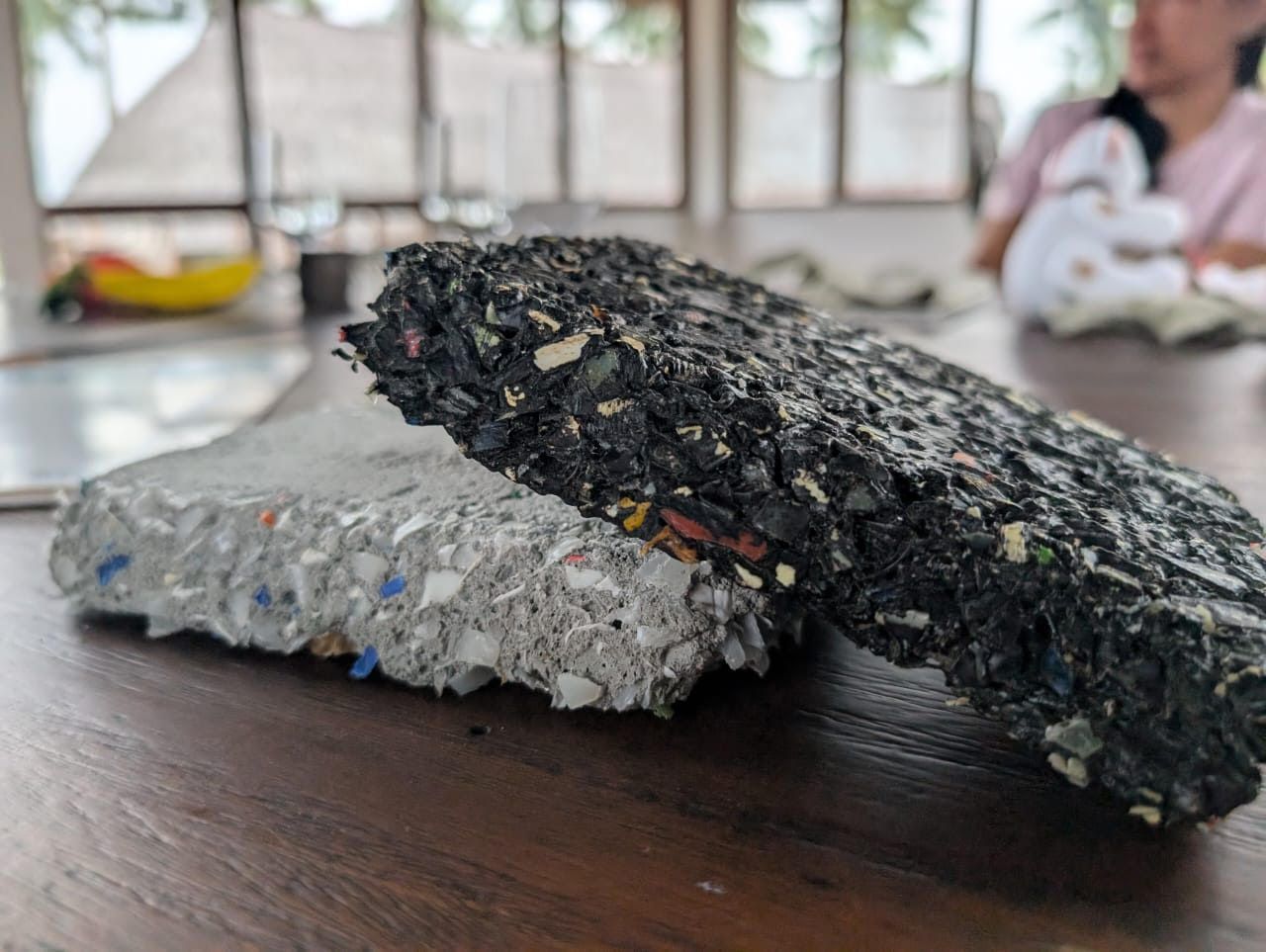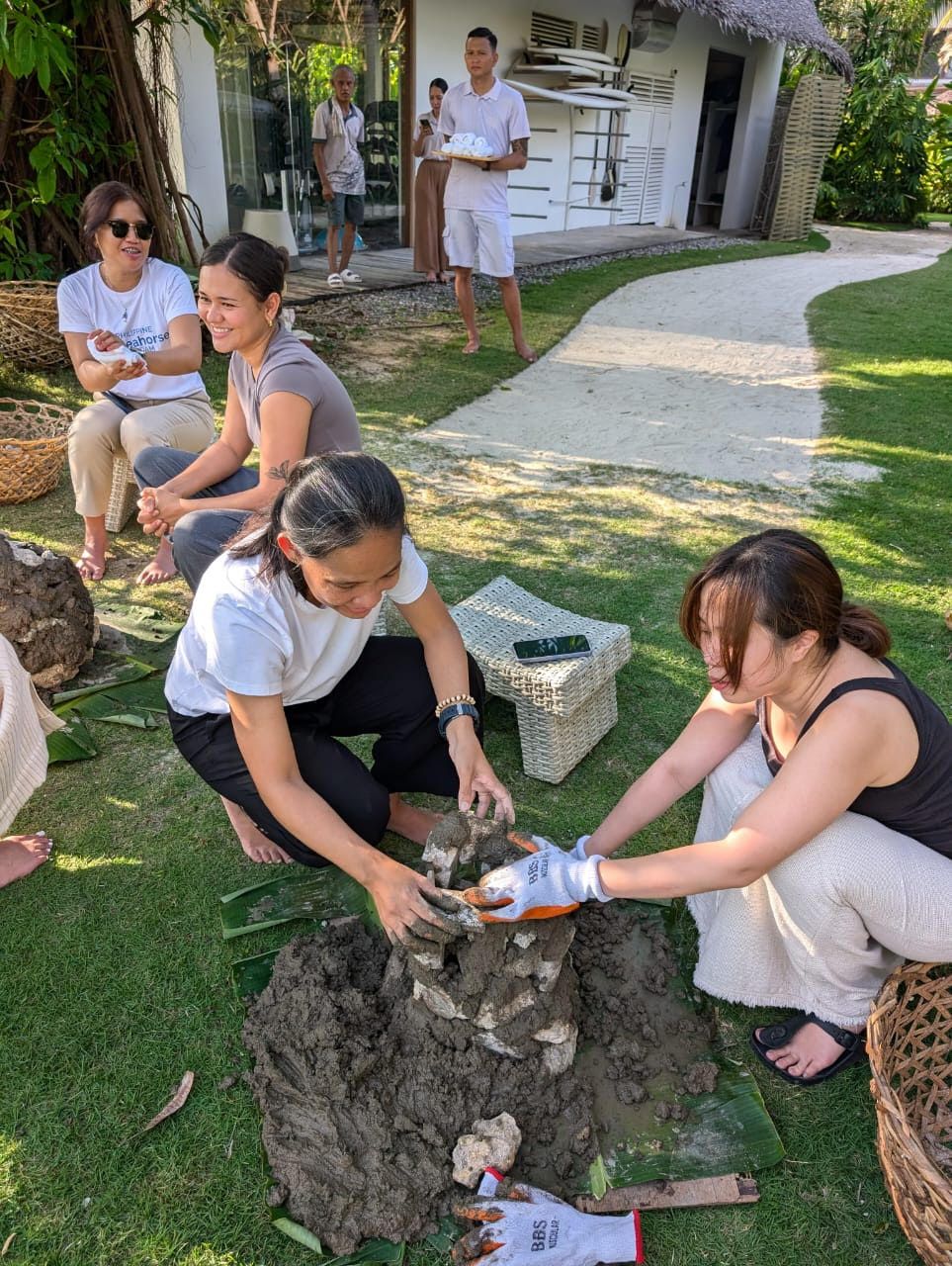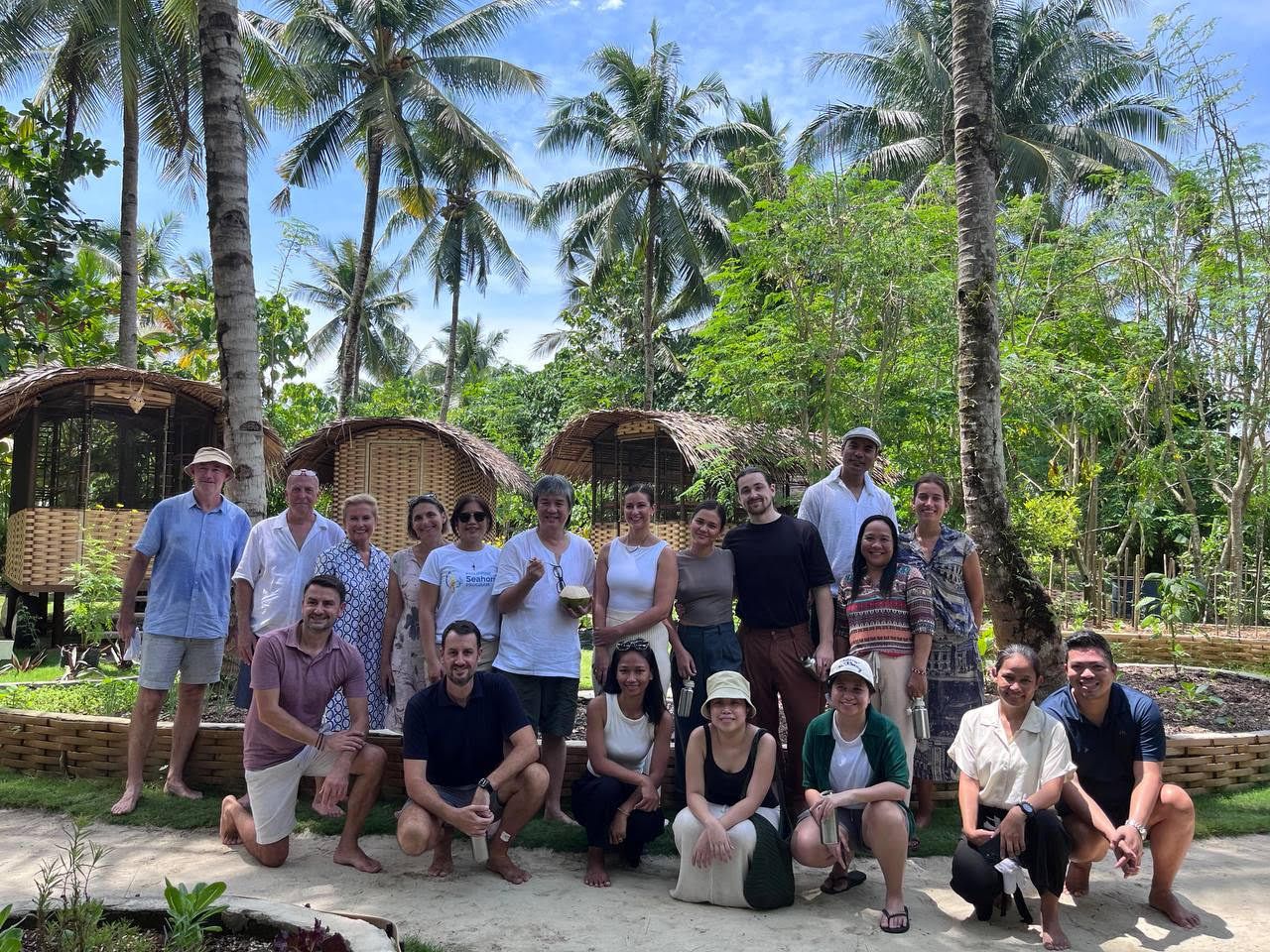The Long Run: Investing in tourism and nature together
Last week, I found myself working with cement and rocks to build a fish dome—a structure that will soon be placed in the ocean to aid the restoration of coral reefs. This was a new experience for me, as my work usually centers around forest conservation. Yet, this activity was equally engaging and purposeful.
It was part of a three-day gathering of Asia-based members of The Long Run, an organization uniting tourism industry changemakers, eco-lodges, and tour operators at the crossroads of nature conservation and tourism.
This year’s annual Asia meeting, hosted by the passionate team at Nay Palad Hideaway in Siargao, brought together owners and managers of sustainable tourism organizations from Nepal, Indonesia, the Philippines, and Cambodia.
Herve and Vince Lampert, along with sustainability manager Irene Meca, made sure we were comfortable and cared for with unlimited cold buko, relaxing massages, and delicious, thoughtfully curated meals.

But beyond hospitality, it was the story of resilience that resonated deeply with me. In December 2021, Typhoon Odette ravaged the island of Siargao, and Nay Palad's team had to evacuate, seeking refuge in safer areas. When the storm subsided, they returned to find their resort completely destroyed. Incredibly, the team rebuilt the entire facility with their own hands in just 18 months, demonstrating the strength and determination needed to overcome such a massive challenge.
This story mirrors the reality the Philippines faces today. Situated in the Pacific Ring of Fire, we experience an average of 20 typhoons annually. These extreme weather events have become even more intense due to climate change.
Tourism, especially in rural areas, is uniquely positioned to help the country adapt to and mitigate the impacts of these extreme weather events. The Lampert brothers’ story is a testament to this—through initiatives like helping staff rebuild homes with prefabricated structures and delivering medicines to the community, they embodied the proactive role tourism can play in climate resilience and disaster recovery.

During the meeting, we also attended expert talks on biodiversity conservation, Blue Carbon, and creating shared value. Dr. Stefan Phang, director of sustainability and corporate social responsibility at Diversey, shared inspiring projects where tourism waste was creatively repurposed: used soaps transformed into hygiene products for vulnerable communities, plastic waste converted into construction materials for roads, and discarded hotel linens upcycled into pouches, stuffed toys, and bags. These initiatives showcased how tourism can simultaneously tackle waste issues and contribute to local communities.
The Long Run is dedicated to driving positive change through its framework that integrates conservation, community, culture, and commerce. As an aspiring member of this network, it was enlightening to witness the diverse ways this framework is applied by its members.
From small lodges and non-profits to globally recognized destinations, the diversity within the organization is one of its greatest strengths. The shared sense of camaraderie, where we can reach out to one another for advice or simply vent about common challenges, is a priceless resource.

For those who wish to learn more about the incredible work being done, I highly encourage you to explore The Long Run and its initiatives. You can visit: thelongrun.org.
Since 2009, The Long Run has worked at the intersection of nature conservation and sustainable tourism. Rooted in the belief that tourism can create lasting prosperity for people on a healthy, resilient planet, it supports a global community of industry change-makers. The organization's industry-leading 4Cs framework—conservation, community, culture, and commerce—guides its efforts to protect ecosystems and empower communities through tourism.